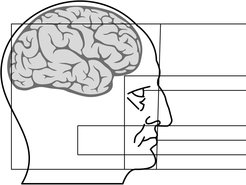Applied Computational Psychiatry

When an organ is unable to meet the demands placed on it, illness can arise. As the main functions of the brain are to compute and learn, an understanding of mental illnesses will benefit from an understanding of the computational and learning functions the brain performs, and how these are affected in states of ill-health.
The Applied Computational Psychiatry group focuses on developing computational tools with real potential for clinical applications. While we are fascinated by the brain and by computational methods in general, our research invests most in
those aspects which we think are most likely to result in treatments. Current projects include:
- the use of computational modelling, neuroimaging and behaviour – to understand what happens when patients stop taking antidepressants and how this leads to relapse. We then attempt to use this knowledge to predict who will relapse and hence aid clinical decision making;
- the use of computational modelling, neuroimaging and behaviour to understand how decision making and learning contribute to the development, maintenance and relapse in alcohol dependence; Link
- development of MEG-decoding approaches to understand automatic negative thoughts;
- development of computational methods to understand affect dynamics.
Key References
Schad, D. J., Rapp, M. A., Garbusow, M., Nebe, S., Sebold, M., Obst, E., Sommer, C., Deserno, L., Rabovsky, M., Friedel, E., Romanczuk-Seiferth, N., Wittchen, H.-U., Zimmermann, U. S., Walter, H., Sterzer, P., Smolka, M. N., Schlagenhauf, F., Heinz, A., Dayan, P., & Huys, Q. J. M. (2019). Dissociating neural learning signals in human sign- and goal-trackers. Nature human behaviour. doi:10.1038/s41562-019-0765-5
Berwian, I. M., Walter, H., Seifritz, E., & Huys, Q. J. M. (2017). Predicting relapse after antidepressant withdrawal – a systematic review. Psychological Medicine, 47(3), 426–437. doi:10.1017/S0033291716002580
Lally, N., Huys, Q. J. M., Eshel, N., Faulkner, P., Dayan, P., & Roiser, J. P. (2017). The neural basis of aversive Pavlovian guidance during planning. The Journal of Neuroscience, 37(42), 10215. doi:10.1523/JNEUROSCI.0085-17.2017
Huys, Q. J. M., Maia, T. V., & Frank, M. J. (2016). Computational psychiatry as a bridge from neuroscience to clinical applications. Nature Neuroscience, 19(3), 404-413. doi:10.1038/nn.4238
Paulus, M. P., Huys, Q. J. M., & Maia, T. V. (2016). A Roadmap for the Development of Applied Computational Psychiatry. Biological Psychiatry: Cognitive Neuroscience and Neuroimaging, 1(5), 386–392. doi:10.1016/j.bpsc.2016.05.001
Deserno, L., Huys, Q. J. M., Boehme, R., Buchert, R., Heinze, H.-J., Grace, A. A., Dolan, R. J., Heinz, A., & Schlagenhauf, F. (2015). Ventral striatal dopamine reflects behavioral and neural signatures of model-based control during sequential decision making. Proceedings of the National Academy of Sciences, 112(5), 1595. doi:10.1073/pnas.1417219112
Huys, Q. J. M., Lally, N., Faulkner, P., Eshel, N., Seifritz, E., Gershman, S. J., Dayan, P., & Roiser, J. P. (2015). Interplay of approximate planning strategies. Proceedings of the National Academy of Sciences, 112(10), 3098. doi:10.1073/pnas.1414219112
Huys, Q. J. M., Pizzagalli, D. A., Bogdan, R., & Dayan, P. (2013). Mapping anhedonia onto reinforcement learning: a behavioural meta-analysis. Biology of Mood & Anxiety Disorders, 3(1), 12. doi:10.1186/2045-5380-3-12
Guitart-Masip, M., Huys, Q. J. M., Fuentemilla, L., Dayan, P., Duzel, E., & Dolan, R. J. (2012). Go and no-go learning in reward and punishment: Interactions between affect and effect. NeuroImage, 62(1), 154–166. doi:10.1016/j.neuroimage.2012.04.024
Huys, Q. J. M., Eshel, N., O'Nions, E., Sheridan, L., Dayan, P., & Roiser, J. P. (2012). Bonsai trees in your head: How the Pavlovian system sculpts goal-directed choices by pruning decision trees. PLoS Computational Biology, 8(3), e1002410. doi:10.1371/journal.pcbi.1002410
